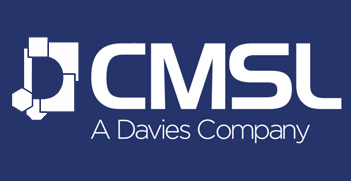The impact that technological innovation will have
29th August 2017

The use of technology in claims is essentially about responding to the needs of the customer. But, such is the pace of technological change – in automation, video, robotics, analytics – many in the insurance world are feeling hard pressed to identify which innovations can help them. So, it’s up to us to make strategic decisions.
The all-important strategy in deploying new technology to disrupt the management of claims is ‘know your client’. Are they time-poor? Do they need extra support through the claims process? Can we help them to manage their business and reduce risks? Whoever the policyholder may be – individual or corporate, big or small – one set of principles prevails. It is that client satisfaction comes from empowering customers and giving them choice. As a result they will be less likely to complain and more likely to renew their policies with our insurance clients.
This isn’t merely a philosophical approach; it needs to be grounded in hard evidence and continuous improvement. Monitoring outcomes using traditional measures – claim cost, complaints, life-cycle – remain valid, but using technology to dynamically monitor Net Promoter Score is a much faster way of driving improvement and service delivery.
So, to get down to the nitty gritty, technology first and foremost needs to make the management of claims fast and efficient. For this you need a single platform – ours is called Cq. This provides the desired insight into the customer experience as well as the ability to feed seamlessly into major clients’ and providers’ own systems. Even more importantly it facilitates sophisticated triage to identify key issues of a claim and gets the approach to the claim right each time. Impressions are all important: a young professional doesn’t have the time for lengthy phone calls and to wait at home for a site visit; a vulnerable customer may not react well to a Bot/App approach to claims management. So, the platform opens up the potential to develop distinctive claim strategies with individual clients and allocate resources accordingly. It means that you can layer new technologies alongside the specialist skills of your claims professionals.
Adopting technology and automation allows businesses to release skilled staff to solve harder problems and implement effective strategies to further drive up service. For instance, the impact of a dual technology and people approach recently transformed the claims outcomes for a real estate business and its relationships with customers. By implementing automation in core processes and overlaying deeper telephony and interactions with claimants, we were able to drive down claim costs, at the same time as driving up satisfaction, with the business now achieving NPS scores in the 60-70 range.
Technology alone does not supply the solution, but it enables us to work smarter and improve service and outcomes. For example, by overlaying new datasets with our Cq claims data, we can more accurately identify fraud potential, or use analytics to help our clients with own risk management strategies.
In emphasising the importance of choice in the implementation of technological innovation, it’s clear that there are a wide range of solutions or approaches to individual claims, and we must select the best solution in each case. Thus, for complex major-loss claims it is essential to get the right technology in the hands of the loss adjuster on the ground. The time scale of the claim is nearly always a big factor and new technology such as drones and video evidence can drastically short circuit traditional methods. For instance, an HD video drone provides the photographic evidence about damage to a church tower in minutes where validation using scaffolding and specialist photography used to take weeks.
However, traditional loss-adjuster-expedited claims is relevant only in a minority of claims across a whole programme. Desk settlement, use of video, and self-service are all important channels that policyholders and clients expect to see,
Fully automated claims processing has a role to play in simple high volume environments. Technology is used to report the claim, capture damage, run a system audit and communicate with the customer electronically. Payment is made automatically.
Claims TPA companies will play an integral part in the value chain only if they continue to adapt to client needs, embrace new technologies and invest in the skills of their people. For these innovators there will undoubtedly be new and diverse opportunities in the client arena – for instance in the realm of complaints and regulatory services. And these new solutions will continue to enhance the efficiency and reputation of insurance providers.
Related Articles
-
- Interview
- Insurance Services
Blog: Attracting diversity into a diverse industry
Lesley Johnson talks to Post Magazine about attracting diversity to the…
-
- Article
- Insurance Services
Davies attends CII Graduate Insurance Event
Yesterday our Training Manager Kaylee and one of our Graduates Chris…
-
- Acquisition
- Article
- Insurance Services
Davies Group announces CMSL acquisition in continuation of its growth strategy
Davies Group today announces the acquisition of Claims Management Services Limited…
-
- Acquisition
- Article
- Consulting
Davies Group announces Cynergie acquisition
Davies Group Ltd, the third party administrator and specialist outsourcer, today…




